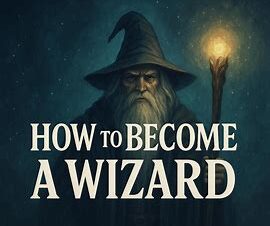“The Romantic Age — Emotion, Imagination, and the Return of the Mystic Wizard”
🎯 Learning Objectives
By the end of this lecture, you should be able to:
- Describe how the Romantic movement reawakened mystical and emotional elements in Western thought.
- Identify artists, poets, and philosophers who embodied the Romantic wizard spirit.
- Explain how emotion, nature, and creativity became pathways to wisdom.
- Recognize how Indigo Wizardry integrates reason and imagination into balanced consciousness.
- Apply Romantic principles—intuition, empathy, and creative vision—to modern wizard practice.
📜 Lecture Script
1. The Pendulum Swings Back
Every era swings like a pendulum.
After the Enlightenment’s devotion to reason came an equally powerful longing for meaning, emotion, and connection.
By the late 18th and early 19th centuries, thinkers, poets, and artists sought to restore soul to the world.
They felt that cold logic had built machines but not meaning; it had charted stars but dimmed the inner light.
Thus arose the Romantic Age — a return to the wizard’s original heart: awe before the mystery of life.
2. The Birth of the Romantic Spirit
The Romantics believed truth could not be found only through calculation but also through feeling, imagination, and direct experience of nature.
They saw the universe as alive, and the human being as a participant in its song.
- William Wordsworth wrote of “intimations of immortality” in the natural world.
- Samuel Taylor Coleridge described imagination as “the living power and prime agent of all human perception.”
- Johann Wolfgang von Goethe studied color and botany not to classify, but to understand their essence.
- William Blake declared, “If the doors of perception were cleansed, everything would appear to man as it is, infinite.”
These were wizards in poetic form—masters of the inner landscape.
3. Nature as Sacred Text
For the Romantic wizard, Nature was not scenery but scripture.
The mountains were temples; rivers, sermons; stars, the punctuation of divine poetry.
They believed that by feeling deeply and observing closely, one could commune with the same force that ancient magi called “Spirit.”
This echoes the wizard’s oldest law: To understand creation, first stand in wonder of it.
Modern wizardry continues this through ecology, herbalism, and environmental ethics—seeing the planet as living consciousness.
4. Emotion as Path to Wisdom
Where earlier centuries prized control and reason, the Romantics honored emotion as a teacher.
They did not equate feeling with weakness but with authenticity.
A wizard who cannot feel deeply cannot understand deeply.
To grieve is to know impermanence.
To love is to touch the divine.
To create beauty is to echo the Source.
The Indigo Wizard learns to channel emotion not through chaos but through clarity—letting feeling become insight, and insight become compassion.
5. The Artist as Wizard
Romantic art became a form of magic: the transformation of emotion into form.
Painters like Caspar David Friedrich placed tiny figures before vast skies to reveal humility before creation.
Composers like Beethoven used symphony to express the drama of the soul.
Writers like Mary Shelley warned of science without heart through Frankenstein.
Art became alchemy of the spirit—a bridge between intellect and inspiration.
6. The Romantic Wizard’s Creed
- Feel deeply.
- Imagine boldly.
- Serve life’s beauty.
- Honor intuition as a form of intelligence.
- Defend the sacredness of nature.
These are not sentimental ideals—they are disciplines of perception. To live romantically is to live awake.
7. The Indigo Wizard and the Inner Universe
For the Indigo Wizard, the Romantic Age represents a vital correction: the reintegration of heart wisdom with mental clarity.
- Where the Enlightenment said, “I think, therefore I am,”
- The Indigo adds, “I feel, therefore I understand.”
Emotion is energy in motion—raw life force. When balanced with reason, it becomes empathy, creativity, and courage.
Unbalanced, it becomes reaction and illusion.
Thus, Indigo practice teaches: observe your emotions as weather—real, powerful, passing. Learn from them, but do not drown in them.
8. Lessons for the Modern Wizard
From the Romantics, modern wizards learn:
- Imagination is not escape but creation’s laboratory.
- Emotion is a compass, not a cage.
- Nature is the teacher ever at your doorstep.
- Beauty is a form of truth.
- Art is meditation made visible.
When logic, love, and nature unite, wizardry becomes a living art of wholeness.
9. Reflection Exercise
In your journal, reflect on these:
- What part of nature makes you feel most connected to something greater?
- How do you express your emotions creatively—through art, music, writing, or conversation?
- Write a short poem or paragraph beginning with: “When I listen to the world, it tells me…”
Optional: Take a walk in nature. Observe with all senses. Record what you feel, not just what you see.
10. Closing Meditation
Close your eyes.
Imagine standing on a cliff at twilight. The wind touches your face; the horizon burns with gold and indigo.
You whisper:
“I am part of this beauty. I am its witness and its voice.”
Breathe in the vastness; breathe out gratitude.
Know that the same life that moves through rivers and stars moves through you.
You are not a spectator of magic—you are its continuation.
*(continued in Lecture 2, Part 10: The Industrial and Modern Wizard — Technology, Chaos, and the Return to Balance)
📚 References
- William Wordsworth, The Prelude (1850)
- Samuel Taylor Coleridge, Biographia Literaria (1817)
- William Blake, The Marriage of Heaven and Hell (1790)
- Goethe, Theory of Colours (1810)
- Zell-Ravenheart, Oberon. Grimoire for the Apprentice Wizard. New Page Books, 2004.
- Grey School of Wizardry www.greyschool.net
